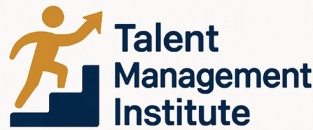
Defining Unregretted Attrition
Defining the Concept of Unregretted Attrition
In the realm of talent management, employee attrition is a phenomenon that organizations must consistently address. It generally refers to the rate at which employees leave a company either voluntarily or involuntarily, impacting the workforce's composition over time. Not all attrition is considered detrimental; this brings us to the nuanced concept of unregretted attrition. Unregretted attrition refers to the natural loss of employees that an organization doesn't consider harmful. When employees leave under these circumstances, it often aligns with the company’s long-term goals and strategic objectives. Companies like Amazon are known for balancing this kind of turnover to maintain a dynamic and skilled workforce that contributes positively to organizational culture and performance. Unregretted attrition often involves employee departures that do not disrupt the organization's core functions or performance improvement. It is a talent strategy that many organizations incorporate into their broader retention plans. Understanding the dynamics of this concept can aid leaders in crafting policies that enhance work environment and employee engagement without hoarding those employees whose exit could be beneficial in reevaluating or evolving work practices. Recognizing unregretted attrition formally allows for a leaner organization by retaining top talent while naturally filtering out those whose departure could positively impact team cohesion and performance. This strategic view also embraces employee turnover as an opportunity for growth, thereby redefining employee attrition beyond negative connotations. For more insights into the frameworks used in developing such strategies, exploring the importance of a diversity and inclusion calendar in talent management can offer valuable perspectives.The Role of Unregretted Attrition in Organizational Strategy
Strategic Integration of Unregretted Attrition
Incorporating unregretted attrition into an organization's strategic planning requires a nuanced understanding of its impact on both the attrition rates and employee turnover. When companies, like Amazon, utilize this approach, they can better tailor retention strategies and performance improvement initiatives that align with their overarching organizational goals. To optimize the attrition rate in a way that supports positive growth, it's crucial to differentiate between regretted and unregretted attrition. While the departure of top talent often results in regretted attrition, unregretted attrition involves employees whose leave may not negatively affect the company's performance or culture. Understanding these dynamics ensures the organization retains high performers while allowing natural turnover that brings in fresh perspectives. Organizations should focus on balancing retention and turnover to enhance both work life balance and employee engagement. By fostering a work environment where employees feel valued, a company can minimize regrettable attrition and manage inevitable departures effectively, maintaining a resilient and dynamic workforce. Implementing unregretted attrition into organizational strategy contributes to an adaptable and optimized workforce, aligning with life balance and long-term objectives. It's about finding the equilibrium where the number of employees is sufficient to sustain day-to-day operations while allowing room for cultural and skill-set growth through strategic attrition management. For further insights on fostering a sense of belonging within talent management, explore this resource.Identifying Unregretted Attrition in Your Workforce
Recognizing Signs of Unregretted Attrition in Your Workforce
Understanding attrition dynamics within an organization requires a keen eye for detail and data analysis. Recognizing unregretted attrition is pivotal to aligning your company's talent management strategy with broader organizational goals. Unregretted attrition involves employees whose departure doesn't negatively impact the company. To identify these cases, several factors come into play:- Performance Metrics: Regular assessment of performance helps in distinguishing between high-performing and underperforming employees. Those consistently underperforming may warrant consideration as unregretted attrition candidates.
- Feedback Mechanisms: Utilize employee feedback tools to gauge how employees feel about the work environment and their job satisfaction. Feedback can provide insight into those who might leave without adversely affecting team dynamics or company culture.
- Turnover Analytics: Analyze turnover rates to pinpoint patterns. A high turnover rate might indicate systemic issues within a team or department. It’s crucial to differentiate between regretted and unregretted cases by examining the reasons behind employees leaving.
- Impact Analysis: Assess the impact of departures on team performance and the organization's culture. Employees whose absence does not disrupt operations or who contribute to performance improvement fall under unregretted attrition.
- Role Fit and Engagement: Evaluate the alignment between an employee’s role and their skills. Misalignment often results in poor engagement and satisfaction, making these individuals potential candidates for unregretted attrition.
Balancing Regretted and Unregretted Attrition
Striking the Right Balance
Effective talent management involves a delicate balancing act between regretted and unregretted attrition. Organizations strive to optimize their workforce by minimizing regretted turnover while strategically leveraging unregretted attrition. Achieving this equilibrium can significantly enhance organizational performance without compromising the company's culture or employee engagement. First, it is vital to understand the distinct nature of each type of attrition. While regretted attrition refers to the loss of valuable employees that can disrupt the workforce, unregretted attrition can be a strategic maneuver. Unregretted attrition occurs when employees leave whose departure does not negatively impact the organization’s goals, or might even improve team dynamics.Methods to Balance Attrition Types
- Evaluate Performance Metrics: Regularly assess employee performance. Identifying underperformers or those misaligned with the company's values allows the organization to navigate attrition proactively. This approach can prevent the negative effects associated with regrettable attrition.
- Foster a Supportive Work Environment: Prioritize creating a work environment where employees feel valued and motivated. This enhances the retention of top talents and significantly reduces regretted attrition.
- Implement Retention Strategies: Adopt strategic retention measures tailored to specific talent segments within the company. Incorporating personalized career development plans and work-life balance initiatives often reduces turnover rates and curbs regrettable attrition.
- Monitor Attrition Rates: Keeping a close eye on attrition forms within the company. By doing so, organizations can differentiate which departures are impacting the work environment in a unfavorable manner and which are beneficial, thus optimizing workforce efficacy.
Impact of Unregretted Attrition on Team Dynamics
Influencing Team Dynamics with Unregretted Attrition
Understanding unregretted attrition within a company is not only crucial for maintaining efficiency but also for managing team dynamics effectively. As organizations aim to optimize their workforce, there is a fine line between replacing underperforming employees and disrupting team cohesion. When attrition occurs—especially when the employee turnover is considered unregrettable—it can initially relieve the work environment from the friction caused by poor performance or insufficient alignment with organizational culture. However, the subsequent reorganization and adjustment periods can affect the remaining team members.- Impact on Morale and Motivation:
- If certain employees leave the organization and this departure is viewed as beneficial, others may feel uplifted by the renewed positive atmosphere.
- Conversely, the constant churn of employees leaving can lead to uncertainty, potentially affecting morale and engagement.
- Adaptation and Workloads:
- While the removal of low-performing employees can enhance a team's overall effectiveness, it lastingly shifts workload distribution.
- Top talent and key performers may be burdened with additional responsibilities, impacting their work-life balance if not managed with deliberate workforce planning.
- Preserving Culture and Identity:
- Organizational culture invariably impacts employee engagement and attrition rates. Unregretted attrition can help preserve and even strengthen a company's desired culture.
- Employees remaining may see this as a commitment from leadership to uphold the company's core values, yet it requires effective communication from management to reaffirm the sense of shared identity and purpose.
- Long-term Growth and Performance Improvement:
- Unregretted attrition ultimately aims to cultivate a stronger team, promoting organizational growth and driving performance improvements over time.
- Leaders should strive to facilitate an environment where employees feel secure and valued, counterbalancing turnover with robust retention strategies.
Best Practices for Managing Unregretted Attrition
Embracing Proactive Measures
Effectively managing unregretted attrition requires adopting proactive measures that align with your organization's overall talent strategy. First, it's crucial for companies to continuously evaluate their employee performance and potential, identifying those whose departure would not adversely affect the team or company goals. This way, the attrition rate can be strategically influenced.
Promoting a Strong Work Environment
An inclusive work environment is central to preventing unnecessary turnovers, ensuring employees feel valued and engaged. By fostering a culture that prioritizes work-life balance, organizations can enhance employee satisfaction and retain top talent while allowing for unregrettable attrition effortlessly.
Implementing Performance Improvement Plans
When employee performance doesn't align with the organization's expectations, implementing targeted performance improvement plans is essential. These plans should aim to address specific challenges while providing clear guidance and time for improvement. If no progress is made, unregretted attrition becomes a viable option that is beneficial for both the employee and the company.
Adapt Retention Strategies
Retention strategies should be adaptable, targeting distinct segments of the workforce. While high performers require incentives to stay, underperformers should be managed with appropriate interventions. This balance helps organizations maintain a healthy attrition rate, focusing on retaining talent and allowing unregretted attrition to occur naturally.
Leverage Data and Analytics
Data-driven insights on employee turnover and overall attrition rates serve as invaluable tools in managing unregretted attrition. By analyzing patterns and gauging employee sentiment, companies can make informed decisions about workforce adjustments while enhancing the work environment.













